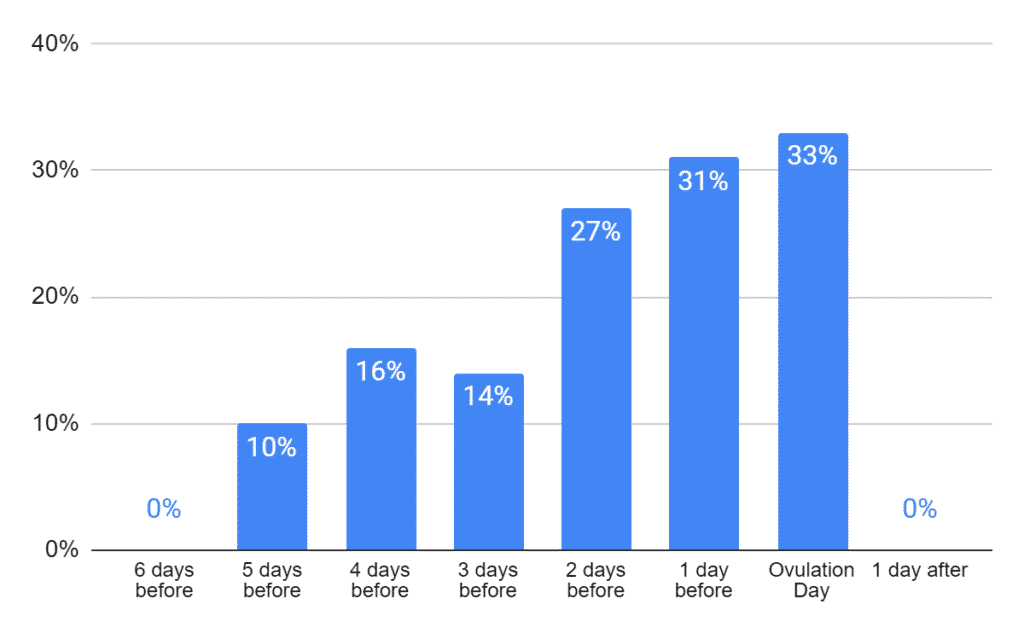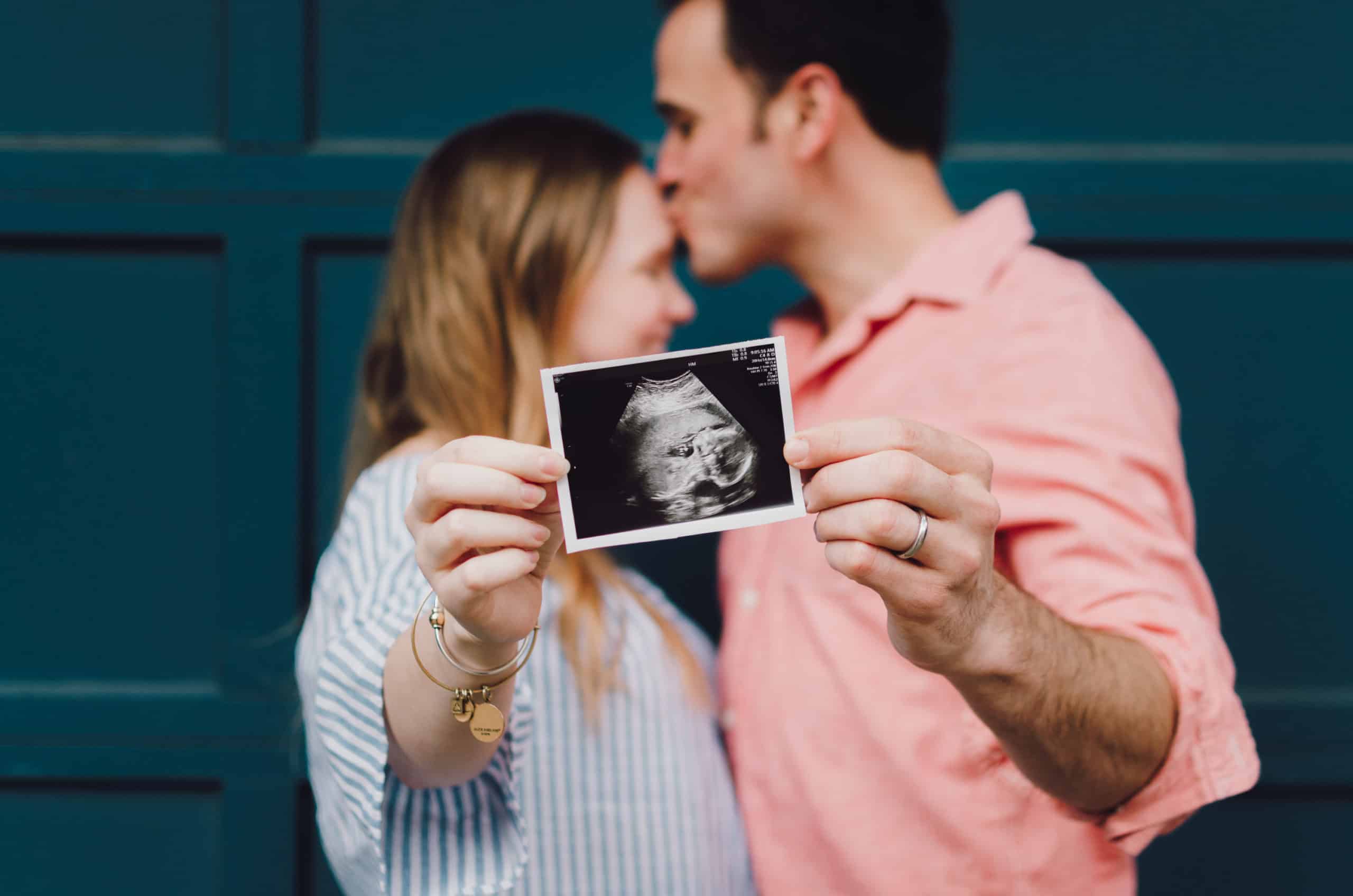The fertility rate in the Scandinavian countries is low – so low that we feel obliged to educate you new expats in the art of making babies, so you can make an effort contributing to the Scandinavian gene pool.
People from all around the world are traveling to Denmark for fertility treatments. Thousands of women every year are turning to Scandinavian countries for a better hope of having a baby. With the less stigmatized society and excellent treatment possibilities, it’s no wonder why.
But, what if we told you it’s possible to boost your odds of conception on your own? All you have to do is track your ovulation period and pick the best time to have sex. If you have no clue how, you’ve come to the right place.
This is a detailed guideline for every woman who wants to learn to plan her fertility. The information listed below can help you stay on track.
Understanding Fertility & Ovulation
Over 70% of American women think they can conceive a child whenever they feel like it. But, out of 100 couples, 12 to 13 of them can’t get pregnant that easy, stated the U.S. Office of Population Affairs.
The truth is, countless women have no idea about the importance of tracking their own reproductive cycle (ovulation). For the Nordic region, this wasn’t always a problem. However, for countries, like the U.S., this has become a serious issue.
The total fertility rate in Scandinavian countries, particularly Sweden, was 1.76 children per woman, as recorded in 2018. These rates were much higher than the ones registered in Lithuania with 1.6 and the U.S. with 1.72.
Why Does Ovulation Matter?
Ovulation is a key component in conceiving a child. During this process, the egg is released from the ovaries. It’s matured and ready to be fertilized. The ovulation period lasts for six days, and at that time, the egg has a higher chance of being impregnated.
Take a look at the graph below. It depicts your chances of conception based on the days before and after ovulation. The statistics are taken from clinical research published by the National Library of Medicine.

To put it simply, ovulation gives women a fertile window. This is a much better opportunity to get pregnant. Each fertile window will depend on a woman’s menstrual cycle. Since every woman will have a different cycle, the results will vary. What’s important is to learn to use the three days before and the day of ovulation to get the desired results.
The reason for that is relatively simple. The sperm and eggs can stay alive for a short period of time. The sperm has a maximum lifespan of 5 days, while the egg can only be inseminated one day after it has been released from the ovaries.
In other words, both men and women need to pick the ideal time for fertilization to be successful. Otherwise, they are more likely to fail.
Fact: Women need to make the most of the ovulation cycle if they want to get pregnant.
Fiction: Women can conceive a child at any time and any day.
What Does Timing Have to Do With Fertilization?
The egg has to be mature enough to be fertilized. When ovulating, the ovaries will release the egg, and it will travel through the fallopian tube. This is the exact period when the egg could be fertilized. The fallopian tubes provide the perfect environment for an embryo to be created. This embryo will then become a baby.
Without proper timing, it’s not possible for an egg to be impregnated. The egg won’t be released, and the sperm won’t be able to fertilize it. For a successful conception, couples must have unprotected sex during the time or before ovulation.
Once the egg leaves the fallopian tube, which is 12 to 24 hours post-ovulation, women can’t get pregnant. Because the fertile window has completely closed, the odds are extremely low. However, that doesn’t mean you shouldn’t take the right precautions. Contraception is the ideal alternative when trying to stay safe during intercourse or avoid getting pregnant.
How to Spot Ovulation?
Tracking your menstrual cycle is the key to figuring out when you are ovulating. With proper tracking, you will know the perfect timing for conceiving a child. Here are a couple of tricks to help you pinpoint your ovulation.
- Menstrual Cycle – The menstrual cycle is a primary indicator of when a woman is ovulating. For those who have a normal cycle, ovulation often appears about 10-16 days before the bleeding begins. The women whose cycle starts on the same day every month will have a much easier time determining the ovulation period.
- Body Temperature Changes – Sudden changes in body temperature are also helpful. When the female body experiences ovulation, the temperature will rise slightly higher than usual. This can be detected with a simple thermometer.
- Discharge – The body will start releasing clear, wet, and slippery discharge. Experts refer to it as cervical mucus, and it appears before and during ovulation.
- Predictor Kits – If your menstrual cycle is hard to predict and the body temperature doesn’t show too significant changes, you can use a predictor kit. Ovulation predictor kits are designed to spot hormone fluctuations, which are a clear ovulation indicator.
Tip: If your cycle always appears at a different length, then you can plan for an average length. Every cycle can last a different number of days. Some women experience regular periods, while others never stick to a predictable pattern.
Women who can’t track their cycle can draft an average length plan. All they have to do is monitor their last three cycles and see when they started. To calculate the average length, add the number of days the three cycles lasted. Then, divide the total number by 3. The final result will determine the average length.
For example: Let’s say your first cycle lasted 27 days, the second 31, and the third 27. You would need to calculate the following result:
27+31+27 = 85
Then, divide the 85 by 3, and you get 28 days. The number 28 will be your average length.
Typical Ovulation Signs
Other than tracking your menstrual cycle or body temperature changes, there are more clear signs that indicate you are ovulating. These signs include:
- Elevated sex drive
- Cramps (mild or high) in the lower part of the abdomen
- Soft cervix
- Swollen vagina or vulva
- Light spotting
Some of them will change as the ovulation progresses. But, they all mean one thing – your fertile window is now open. The truth is, many women will experience various changes. Whether it is in the symptoms or level of pain and cramps, they are feeling. What’s important is it to pay attention to the hormone fluctuations if you want to determine your highest fertility peak.
How to Maximize the Odds of Conception
Having just unprotected sex during ovulation is not the only thing that matters. Experts believe that if patients want to increase their chances of conception, they have to pay attention to several factors that may interfere with the whole process.
Technically, the odds of impregnating a woman during ovulation range from 20% to 30%. In other words, there is still a chance that it won’t work. If you want to increase your odds, you will need to try the following things:
- Limiting the alcohol intake
- Avoiding smoking
- Keeping a healthy body weight
- Having regular intercourse
Alcohol plays a massive role in fertility rates. Studies show that couples who’ve consumed alcohol frequently had an 18% chance less to conceive a child compared to moderate drinkers. The alcohol reduces sperm count in men and disrupts fertility in women. When paired with bad eating habits and inadequate nutritional intake, the reproduction rates are even lower.
Smoking is another problem. Not only does it decrease fertility, but it also affects the development of the fetus. The chemicals in cigarettes expose the sperm and the egg to DNA damage. They might also harm the fetus if consumed in heavy amounts.
While overweight individuals will have a hard time regulating their ovulation, obese women will have higher leptin levels. This will create a massive hormone imbalance and reduce fertility rates. Then you have the basic factor, which is regular sex.
Some people believe that having just one unprotected sex will help them get a baby. But, that’s not always the case. Sometimes, the body will need a couple of days to provide that turnaround. In cases such as these, it’s better to have intercourse often and boost your odds.
Does Age Matter?
Yes. Age is crucial when trying to conceive. Women’s fertility starts to drop after 35 years. In older women, fertility rates take a steady decline. To have a higher chance of getting a baby, couples need to be younger, preferably in their 20s.
When to Contact a Doctor?
If tracking the fertile window doesn’t produce favorable results, you might want to see a doctor. They can help identify any barriers that might hold your progress. You may have to receive proper treatment or supplements that can boost the odds.
For couples under the age of 35, it’s a good idea to ask a doctor after one year of trying. Older couples should wait six months after trying to ask for help. Fortunately the health care system in Scandinavia is considered to be excellent and for free – at least in this particular area – so if you are staying as an expat you can easily get help with your fertility.



